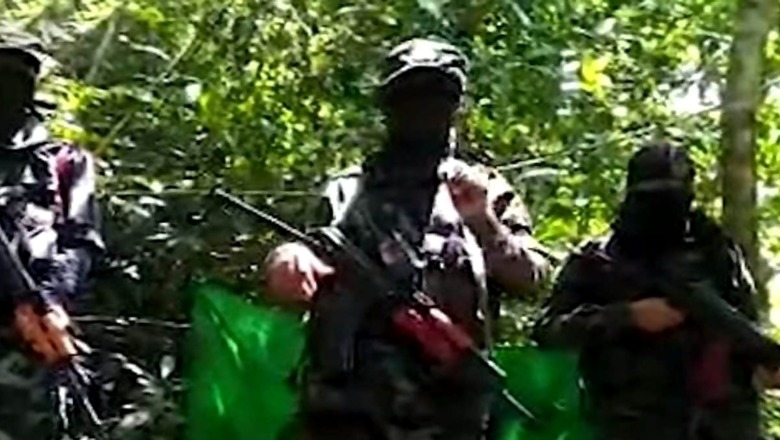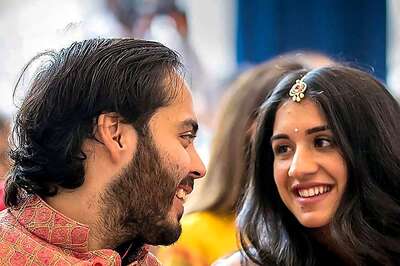
views
Assam’s firmament which had been witnessing great turmoil and stress by way of the United Liberation Front of Asom’s (ULFA) various subterfuges inside the state for over 30 years is now basking in relative quietude. While much of the reason for the success in stymieing the insurgent organisation’s firepower can be attributed to the security forces, the most important aspect that stemmed ULFA’s growth was the realisation among the people of Assam that the outfit was retarding the state’s growth. To that end, it would be of importance to note that the mantra that a former governor of Assam, the late Lt Gen. S.K. Sinha, had endowed on the state establishment (this author was Adviser, Security to the Government of Assam during the time) worked admirably. Elegant, hard-hitting and substance laden, the triadic essence was simply a) Kinetic Action b) Psychological Initiative and c) Developmental Initiative. The fruits of the combination of the three are being happily reaped by the people of Assam and the ones who presently govern the once-troubled state.
ULFA of the period 1985-2009 was a force to reckon with. There were explosions aplenty in Assam. Extortion, abduction, boycott calls and assassinations had become the order of the day. But a couple of events turned the clock on ULFA. The first was the Royal Bhutan Army operations in December 2003 against ULFA, National Democratic Front of Boroland (NDFB) and Kamtapur Liberation Organisation (KLO) in the Himalayan kingdom. The second was the return to power of Sheikh Hasina and her dispensation handing over almost the entire leadership of ULFA to India. The third was the implication of Paresh Baruah in the Chittagong Arms Haul case of April 1, 2004. The last made Baruah flee to Myanmar and thence to Yunnan in China. The bastions that ULFA—Bhutan, Bangladesh and Myanmar—had (apart from Myanmar) had been lost and the outfit began to careen out of control.
The revolutionary attire of ULFA soon wore off and even its most ardent supporters began abandoning it. Invited to be part of a panel to discuss insurgency in the Northeast in the recently concluded IIT, Guwahati festival “Alcheringa”, this author was pleasantly surprised when a fellow panellist and scribe confessed before the students of the premier institution that media of Assam had erred when a section of it had sought to support ULFA during its heyday. Indeed, the admission was laced with a sense of repentance for having lent space, encouragement and support to the organisation which grew as a result of it showcasing itself as a militant manifestation of the students’ movement against illegal migration from Bangladesh.
A positive note aside, it would be worthwhile to take stock of the bill of health that characterises ULFA of the present. A divided house, the organisation’s hardliners, headed by its chief of staff, Paresh Baruah is in the hands of China’s Ministry of State Security. Paresh Baruah is a resident of Yunnan province’s Tinsum Prefecture in Ruili and is reportedly battling kidney failure.
Paresh Baruah’s cadres, whose strength is dwindling by the day, are billeted in four camps in Myanmar’s Sagaing Division. Baruah’s second in command and heads of the four camps self-styled “Lt Gen” Michael Deka Phukan, self-styled “Maj Gen” Nayan Medhi, self-styled “Brig” Michael Asom and self-styled “Brig” Arunodoy Dohatia oversees the outfit’s camps lyrically named Nilgiri (also the General Mobile HQ), Everest, Hachi and Arakan. The Arakan camp is also known as Camp 779. Stumped during a presentation by this author, the uninitiated in an important security establishment wondered and queried as to why the camp was termed “779”. It was really quite elementary for the student of national security (perhaps because of his long years of following ULFA). “779” quite simply refers to April 7, 1979, the day ULFA was formed in Sibsagar’s Ranghar, the amphitheatre of the Ahom monarchs who ruled Assam for close to 600 years.
In any event, ULFA’s fortunes are on the wane. Its extortion efforts have gone down by 60 percent and even the spurt of recruitment which was briefly witnessed in 2022 has folded up.
However, it is this author’s prognosis that Paresh Baruah’s illness, desertions and fund crunch notwithstanding, there is always a possibility for the organisation to arise from the ashes phoenix-like. Myanmar continues to be in turmoil as a result of the February 1, 2021, military takeover. Many Valley-Based Insurgent Groups (VBIGs) have come to an agreement with the Myanmar army and are aiding it to quell the civil strife that has erupted as a result of the putsch. ULFA, too, has in all probability engineered some sort of tacit understanding with the Tatmadaw. After all, none of its camps have been touched by Myanmar after Op Sunrise-I and II took place in 2019. But with the military takeover, the Myanmar Army has done an almost 180-degree turn and is no longer collaborating with the Indian Army to attack the Indian Insurgent Camps in the country. Furthermore, there are stray reports that ULFA (Arunoday Dohatia) is raring to avenge the death of one Udoy Asom and could well be planning an IED attack on the security forces in Upper Assam. Therefore, the accent of the time should be on (a) caution (b) pre-emptive action and most importantly (c) active attempts to bring back the wayward cadres of ULFA to Assam.
Under the circumstances, such an exercise should be quite undemanding. There was a textbook precedence to a great “homecoming” in the manner a senior ULFA leader of Lower Assam, Drishti Rajkhowa, was brought to Assam from Bangladesh. Rajkhowa had been operating with great dexterity from Sherpur in Bangladesh and in and around West Garo Hills and the region adjacent to Agia in Assam’s Goalpara district. The security forces in the area have had considerable successes in neutralising several commandants of the erstwhile 109 Battalion of ULFA including the dreaded Lal Deka. But various efforts to track down Drishti Rajkhowa had failed. It was only after he appealed to the Indian Army (purportedly with the acquiescence of Paresh Baruah) that a mission (Op Malakhand) was launched to ensure his safe return. Rajkhowa returned to his motherland after years in the jungle and after having commanded the erstwhile 109 Battalion of ULFA. He and his family are happy in the environs and it is testimony to the Indian state’s magnanimity and large-heartedness that it not only carefully ferried a ULFA “commandant” back home, but has been able to enthuse the once insurgent leader’s son to join the Indian Police Service (IPS).
Jaideep Saikia is a Conflict Theorist and Author of Several Bestselling Books. Views expressed are personal.
Read all the Latest Opinions here



















Comments
0 comment